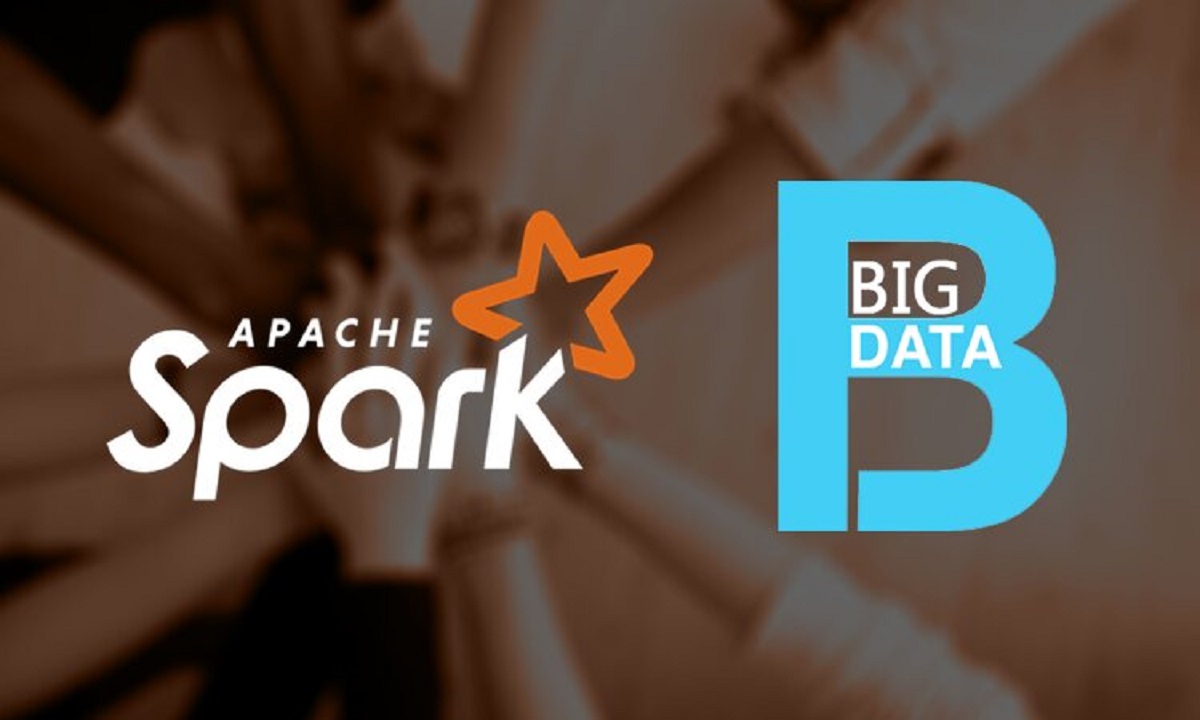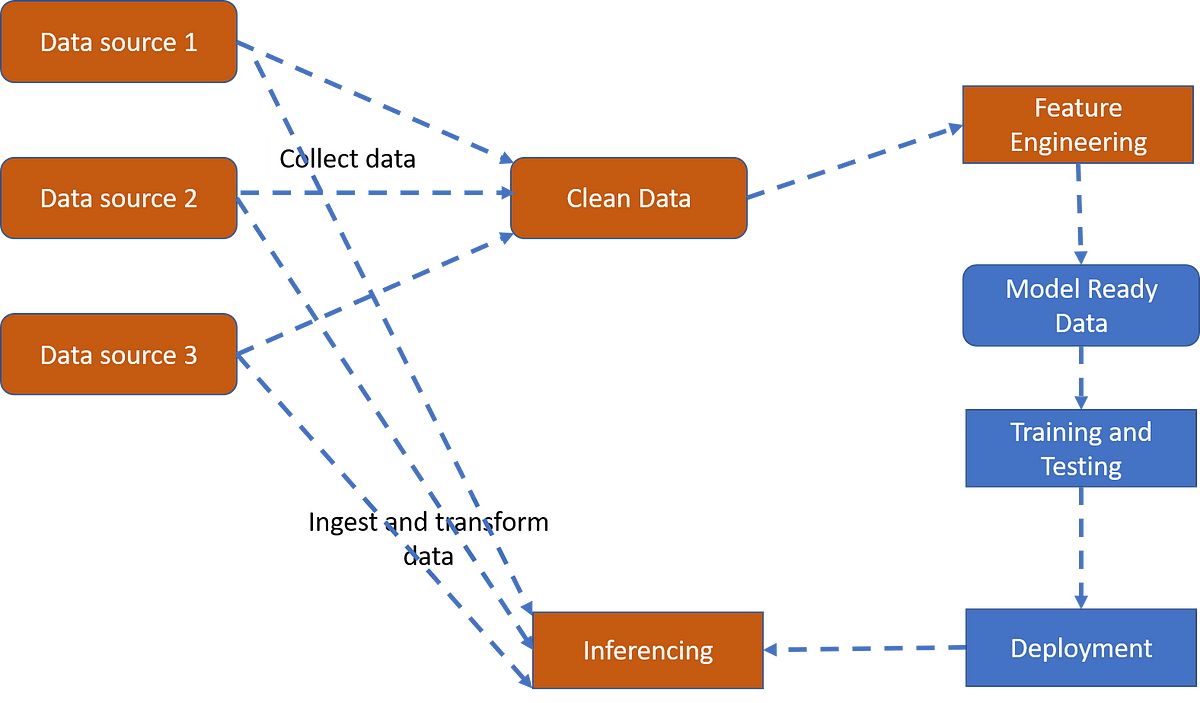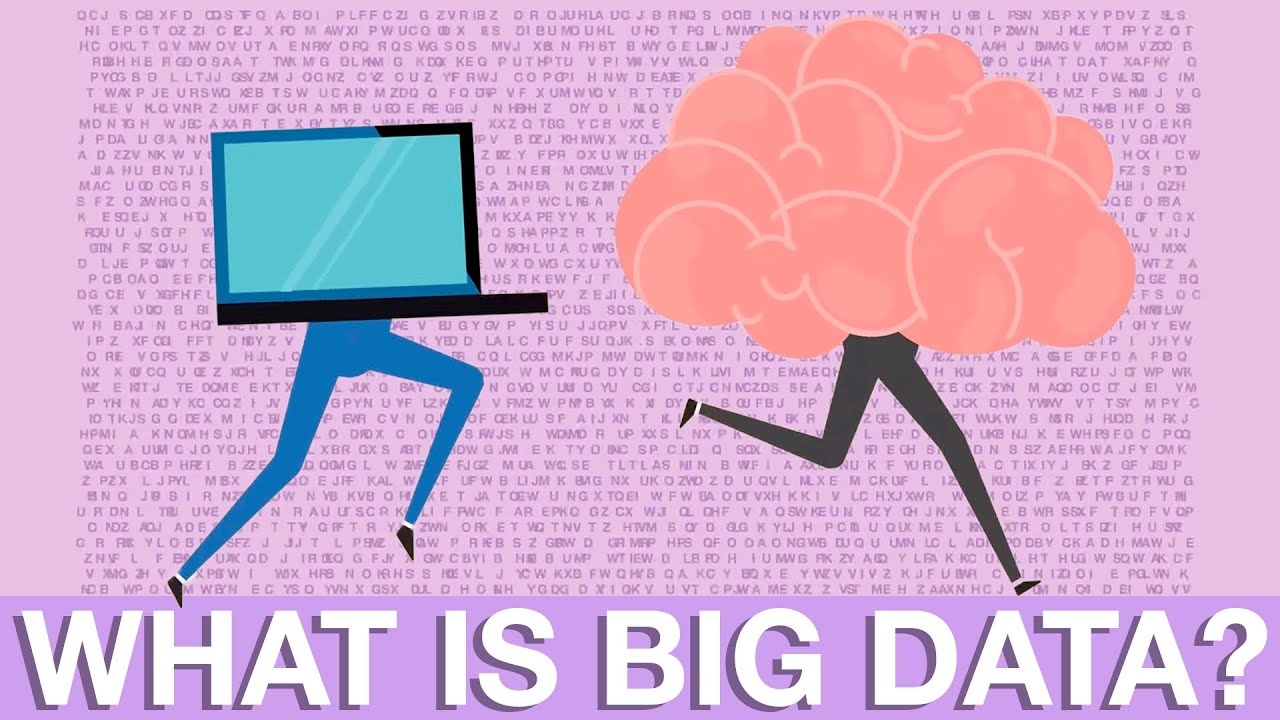Introduction:
Welcome to the world of big data, where massive amounts of data are generated and analyzed every day. In this era of technological advancements, organizations and businesses have realized the potential of leveraging big data to gain valuable insights, make better decisions, and drive innovation. However, handling and processing such large volumes of data can be a daunting task.
This is where Spark comes into play. Spark, an open-source distributed computing system, has emerged as a powerful tool in the field of big data analytics. It provides a lightning-fast and flexible platform for processing huge datasets in real-time, making it an indispensable technology in the big data ecosystem.
Spark is designed to overcome the limitations and challenges faced by traditional big data processing frameworks. It offers a unified and comprehensive solution that combines batch processing, stream processing, and machine learning capabilities, all under one roof. With its ability to handle both structured and unstructured data, Spark has gained immense popularity among data engineers and data scientists alike.
By harnessing the power of Spark, organizations can achieve faster data processing speeds, improved scalability, and enhanced fault-tolerance. Spark’s versatility and ease of use have made it the go-to tool for a wide range of big data applications, including real-time analytics, fraud detection, recommendation engines, and more.
In this article, we will explore the ins and outs of Spark, its components, architecture, and the advantages it brings to big data applications. We will also delve into real-world use cases that highlight the immense potential of this cutting-edge technology. So, grab a cup of coffee and join us on this exciting journey into the world of Spark and big data.
What is Spark?
Spark, developed by Apache Software Foundation, is a lightning-fast and distributed computing system designed to process large-scale datasets. It provides an efficient and unified platform for various data processing tasks, including batch processing, interactive queries, streaming, and machine learning.
Unlike traditional big data processing frameworks, Spark operates in-memory, enabling faster data processing speeds and reducing the need for repetitive disk I/O operations. It leverages a resilient distributed dataset (RDD), a fault-tolerant data structure, to efficiently distribute data across a cluster of machines and perform parallel computations.
Spark is known for its user-friendly and expressive APIs, which allow developers to write code in multiple languages, including Scala, Java, Python, and R. This flexibility makes it accessible to a wide range of developers and data scientists.
One of the key features of Spark is its ability to perform data processing tasks in real-time, making it suitable for handling streaming data and time-sensitive applications. Spark Streaming, a component of Spark, enables processing and analyzing continuous data streams in near real-time, providing real-time insights and decision-making capabilities.
Another noteworthy feature of Spark is its machine learning library, known as MLlib. MLlib offers a wide range of algorithms and tools for machine learning tasks, such as classification, regression, clustering, and recommendation systems. It simplifies the process of building and deploying machine learning models, allowing data scientists to leverage Spark’s distributed computing capabilities for large-scale data analysis.
Overall, Spark is a comprehensive and versatile data processing framework that offers the speed, scalability, and flexibility required for big data applications. Its powerful capabilities and ease of use make it a preferred choice for organizations looking to extract valuable insights from their large datasets.
History of Spark:
The story of Spark begins at the University of California, Berkeley, where a research project called AMPLab was initiated in 2009. The goal of this project was to address the challenges of processing large-scale datasets by developing a fast and reliable distributed computing system.
AMPlab researchers Matei Zaharia, Patrick Wendell, and their team started working on a new framework called Spark, which aimed to improve upon the limitations of existing data processing systems like Hadoop. They wanted to create a system that could handle both batch processing and real-time streaming data, while providing faster execution speeds and better fault-tolerance.
In 2010, the first public release of Spark was made available. Over the years, the Spark project gained significant traction and received contributions from a large and active open-source community. In 2013, the project was officially taken over by the Apache Software Foundation and became an Apache top-level project.
Since then, Spark has witnessed rapid development and adoption in various industries. It has evolved into a comprehensive data processing ecosystem, incorporating additional libraries and components to cater to different use cases. Notable additions include Spark SQL for SQL-based querying, Spark Streaming for real-time stream processing, and MLlib for machine learning tasks.
Spark’s popularity soared when it demonstrated its capabilities in the Big Data domain, winning the Daytona GraySort Benchmark in 2014 by sorting a petabyte of data on a large cluster in under 24 hours, a record at the time. This accomplishment established Spark as one of the leading big data processing frameworks.
Today, Spark has become the de facto standard for big data processing, with widespread adoption across industries and organizations of all sizes. It continues to evolve, with regular releases introducing new features and improvements.
The history of Spark is a testament to the commitment of the open-source community, who continue to contribute and enhance the framework, making it a versatile and powerful tool in the world of big data analytics.
Features of Spark:
Spark offers a wide range of features that make it a popular choice for big data processing and analytics. Let’s take a closer look at some of its key features:
- Speed: Spark is known for its lightning-fast data processing speeds. By leveraging in-memory computing and optimized data processing techniques, Spark significantly reduces the need for disk I/O operations, resulting in faster execution times.
- Flexibility: Spark provides flexible programming models, allowing developers to write code in multiple languages, including Scala, Java, Python, and R. This flexibility enables developers to leverage their existing skills and choose the language that best suits their needs.
- Scalability: Spark offers seamless scalability, allowing users to scale up or down their data processing tasks based on the size and complexity of their datasets. It can efficiently handle large-scale datasets and distribute the workload across a cluster of machines.
- Fault-Tolerance: Spark incorporates fault-tolerance mechanisms to ensure uninterrupted data processing even in the event of failures. It achieves fault-tolerance through the concept of resilient distributed datasets (RDDs), which allow data to be stored and recovered in case of node failures.
- Real-Time Processing: Spark is well-suited for real-time data processing and analytics. It includes Spark Streaming, which enables processing and analyzing continuous data streams in near real-time, making it ideal for applications that require quick response times.
- Comprehensive Ecosystem: Spark provides a comprehensive ecosystem with a wide range of libraries and modules to cater to different data processing needs. These include Spark SQL for SQL-based querying, MLlib for machine learning tasks, GraphX for graph processing, and more.
- Integration: Spark seamlessly integrates with other big data tools and frameworks, such as Hadoop, allowing users to leverage their existing infrastructure. It can work alongside Hadoop Distributed File System (HDFS) and run on a cluster managed by Apache Mesos, Hadoop YARN, or Spark’s standalone cluster manager.
- Data Sources: Spark supports a variety of data sources, including Hadoop Distributed File System (HDFS), Apache Cassandra, Apache HBase, Amazon S3, and many more. This enables users to easily read and write data from different sources, enhancing the interoperability of Spark with other systems.
These features, along with many others, make Spark a powerful and versatile framework for big data processing. Its speed, flexibility, scalability, and fault-tolerance capabilities have revolutionized the way organizations handle and analyze massive amounts of data.
Spark Components:
Spark consists of several components that work together to enable efficient and distributed data processing. Let’s explore these components in detail:
- Spark Core: This is the foundation of the Spark framework and provides basic functionality for distributed task scheduling, memory management, and fault recovery. It includes the resilient distributed dataset (RDD) abstraction, which allows for fault-tolerant parallel data processing.
- Spark SQL: Spark SQL enables users to execute SQL queries against structured and semi-structured data. It provides a programming interface for working with structured data and integrates seamlessly with existing Spark programs. Spark SQL also supports reading and writing data in various file formats, making it easy to interact with data from different sources.
- Spark Streaming: This component allows for real-time data processing and analysis of data streams. Spark Streaming divides the incoming data stream into small batches, which are then processed using the Spark engine. It provides fault-tolerant and scalable stream processing capabilities and can integrate with various data sources such as Kafka, Flume, and HDFS.
- MLlib: Spark’s machine learning library, MLlib, offers a wide range of algorithms and tools for machine learning tasks. It provides scalable implementations of popular algorithms, including classification, regression, clustering, and recommendation systems. MLlib leverages Spark’s distributed computing capabilities to process large-scale datasets efficiently.
- GraphX: GraphX is a library within Spark for graph processing and analytics. It provides an abstraction called Resilient Distributed Property Graph (RDGP) for efficient distributed graph computation. GraphX includes a wide range of graph algorithms and tools to perform operations like graph building, querying, and traversal.
- SparkR: SparkR is an R package that brings the power of Spark to the R programming language. It provides a convenient and efficient interface for data scientists to perform distributed data processing and analytics using Spark.
- Spark Streaming: This component allows for real-time data processing and analysis of data streams. Spark Streaming divides the incoming data stream into small batches, which are then processed using the Spark engine. It provides fault-tolerant and scalable stream processing capabilities and can integrate with various data sources such as Kafka, Flume, and HDFS.
- PySpark: PySpark is the Python library for Spark, enabling developers to write Spark applications using Python. It provides an easy-to-use API for accessing Spark’s distributed computing capabilities from the Python programming language.
- Spark Packages: Spark Packages are third-party libraries that extend the functionality of Spark. These packages provide additional features, connectors, and tools that can be used alongside Spark to address specific use cases and requirements.
These components collectively form the Spark ecosystem, providing developers and data scientists with a wide array of tools to process, analyze, and derive insights from large-scale datasets efficiently and effectively.
Spark Architecture:
The architecture of Spark is designed to enable distributed and fault-tolerant data processing across a cluster of machines. Let’s take a closer look at how Spark’s architecture is structured:
Driver: At the heart of a Spark application is the driver program. The driver program runs the main function and coordinates the execution of tasks across the cluster. It interacts with the cluster manager and divides the tasks into smaller units of work called tasks, which are then executed on executor nodes.
Cluster Manager: The cluster manager is responsible for managing the allocation of resources and coordinating the execution of tasks across the cluster. Spark supports multiple cluster managers such as Apache Mesos, Hadoop YARN, and Spark’s standalone cluster manager.
Executor: Executors are worker nodes in the Spark cluster where tasks are executed. Each executor is responsible for running multiple tasks concurrently and managing the memory allocated for caching and processing data. Executors communicate with the driver program and can be dynamically added or removed based on the workload.
Resilient Distributed Dataset (RDD): RDD is Spark’s fundamental data abstraction. It is an immutable distributed collection of objects that can be processed in parallel across the cluster. RDDs are fault-tolerant, meaning they can recover lost data partitions automatically. RDDs can be created from data in Hadoop Distributed File System (HDFS), local file systems, Apache Cassandra, and more.
Task: A task is the smallest unit of work in Spark. It represents a single operation that needs to be performed on a partition of data. Tasks are scheduled and assigned to different executor nodes by the driver program. Each executor runs multiple tasks concurrently.
Caching and Memory Management: Spark provides an in-memory caching mechanism that allows intermediate data to be stored in memory for faster access. Spark automatically manages the memory and optimizes data placement to minimize disk I/O operations. Caching is especially beneficial for iterative algorithms and interactive queries, as it eliminates the need to read data from disk repeatedly.
Parallel Data Processing: Spark processes data in parallel by dividing it into smaller partitions. Each partition is processed independently on different executor nodes. This parallel processing enables Spark to achieve efficient and scalable data processing across large datasets.
Streaming and Batch Processing: Spark supports both real-time streaming and batch processing. Streaming data is divided into micro-batches, which are processed in near real-time using Spark Streaming. Batch processing involves processing large amounts of data in parallel across the entire cluster.
Integration with Other Tools: Spark seamlessly integrates with other big data tools and frameworks, such as Hadoop, Hive, and HBase. It can read and write data from different data sources, enabling easy interoperability with existing systems.
Overall, Spark’s architecture provides a flexible and robust framework for distributed data processing. Its modular design and efficient execution engine make it a powerful tool for handling and analyzing large-scale datasets efficiently and effectively.
Spark in Big Data Applications:
Spark has revolutionized big data processing and analytics, offering several advantages that make it a preferred choice for various applications. Let’s explore how Spark is utilized in different areas of big data:
Real-time Analytics: Spark’s ability to process streaming data in real-time makes it an ideal choice for real-time analytics applications. It can ingest and analyze data from various sources, such as social media streams, sensor data, and log files, enabling businesses to make immediate decisions and gain valuable insights from the data as it flows in.
Iterative Algorithms: Spark’s in-memory computing capabilities make it ideal for running iterative algorithms, such as machine learning algorithms. By keeping data in memory, Spark reduces disk I/O overheads, greatly improving the performance of iterative computations and accelerating the training and evaluation of machine learning models.
Data Extraction and Transformation: Spark’s flexible APIs and support for various data formats make it well-suited for data extraction and transformation tasks. It can efficiently read and write data from different sources, perform complex data transformations, and clean and preprocess data before analysis.
Recommendation Systems: Spark’s machine learning library, MLlib, provides powerful tools and algorithms for building recommendation systems. With Spark, businesses can develop personalized recommendation engines that analyze user behaviors, historical data, and other factors to deliver relevant and targeted recommendations, improving customer satisfaction and engagement.
Graph Analytics: Spark’s GraphX library enables graph processing and analysis, making it valuable for applications involving social networks, cybersecurity, and network analysis. Companies can use Spark to identify influential nodes, detect patterns, and gain insights from the complex relationships present in graph data.
Log Analysis and Fraud Detection: Spark’s speed and scalability make it ideal for log analysis and fraud detection. It can efficiently process and analyze large volumes of log data in real-time, enabling businesses to identify patterns, detect anomalies, and quickly respond to security threats and fraudulent activities.
Big Data Warehousing: Spark’s integration with data warehousing tools, such as Apache Hive and Apache HBase, allows businesses to leverage Spark for large-scale data analytics within their data warehouse environment. This combination enables fast and interactive querying of large datasets, providing valuable insights to inform business decisions.
Spark’s versatility, speed, scalability, and ease of use make it a valuable tool for a wide range of big data applications. Its ability to handle both real-time and batch processing, perform complex computations, and integrate with existing big data tools has made it a cornerstone of modern big data ecosystems.
Advantages of Spark:
Spark offers several advantages that have made it the go-to framework for big data processing and analytics. Let’s explore some of the key advantages of using Spark:
- Speed: Spark is renowned for its lightning-fast processing speeds. By leveraging in-memory computing and optimized data processing techniques, Spark significantly reduces the need for disk I/O operations, resulting in faster execution times and improved overall performance.
- Scalability: Spark provides seamless scalability, allowing businesses to handle large-scale datasets and process massive amounts of data. Its ability to distribute work across a cluster of machines enables parallel processing, ensuring efficient utilization of resources and enabling businesses to scale their operations as needed.
- Flexibility: Spark offers flexible programming models, allowing developers to write code in multiple languages, including Scala, Java, Python, and R. This flexibility enables developers to leverage their existing skills and choose the language that best suits their needs and preferences.
- Fault-Tolerance: Spark incorporates fault-tolerance mechanisms, ensuring uninterrupted data processing even in the event of failures. It achieves fault-tolerance through the concept of resilient distributed datasets (RDDs), which allow data to be recovered automatically in case of node failures.
- Unified Data Processing: Spark provides a unified and comprehensive framework for various data processing tasks, including batch processing, real-time streaming, interactive queries, and machine learning. This eliminates the need for separate systems and simplifies the development and management of big data applications.
- Rich Ecosystem: Spark has a rich ecosystem of libraries and tools, such as Spark SQL, MLlib, and GraphX, which provide powerful functionalities for different data processing and analytics needs. These libraries enable users to perform complex data operations and leverage machine learning algorithms seamlessly.
- Integration: Spark seamlessly integrates with other big data tools and frameworks, such as Hadoop, Hive, and HBase. It can read and write data from various data sources, enhancing interoperability and allowing businesses to leverage their existing infrastructure and investments.
- User-Friendly APIs: Spark offers user-friendly APIs, making it accessible to developers and data scientists with different skill sets. The APIs are well-documented and easy to understand, enabling quick adoption and accelerating the development process.
- Community Support: Spark has a vibrant and active open-source community that provides continuous support, contributes to the development of the framework, and shares knowledge and best practices. This strong community support ensures that Spark remains up-to-date and reliable for big data processing.
These advantages of Spark have made it a game-changer in the field of big data analytics. Its speed, scalability, flexibility, and fault-tolerance capabilities have revolutionized the way organizations handle and analyze massive amounts of data, unlocking new opportunities and insights for businesses across various industries.
Use Cases of Spark:
Spark’s versatility and powerful capabilities make it applicable to a wide range of use cases across industries. Let’s explore some of the key use cases where Spark has been successfully applied:
- Real-time Analytics: Spark’s ability to process streaming data in real-time has made it a popular choice for real-time analytics applications. It allows businesses to analyze and gain insights from data as it arrives, enabling real-time decision-making and enhancing operational efficiency.
- E-commerce and Retail: Spark is widely used in e-commerce and retail industries for tasks such as personalized product recommendations, fraud detection, customer segmentation, and inventory optimization. Spark’s machine learning capabilities and fast processing speed help businesses improve customer experience, increase sales, and mitigate risks.
- Finance and Banking: Spark is a valuable tool in the finance and banking sector for fraud detection, real-time risk analysis, algorithmic trading, and credit scoring. Spark’s ability to process large volumes of data quickly allows financial institutions to identify potential fraudulent activities, make informed investment decisions, and manage risk effectively.
- Healthcare and Life Sciences: Spark plays a crucial role in healthcare and life sciences by enabling rapid analysis of large-scale genomics data, healthcare analytics, personalized medicine, and drug discovery. By leveraging Spark’s powerful capabilities, researchers and healthcare professionals can uncover valuable insights and contribute to advancements in medical science.
- Telecommunications: Spark is used in the telecommunications industry for various applications such as customer churn prediction, network optimization, and fraud detection. With Spark’s real-time processing and machine learning abilities, telecom companies can enhance customer retention, optimize network performance, and detect and prevent fraud in a timely manner.
- Log Analytics: Spark is well-suited for log analytics, allowing businesses to analyze and extract insights from machine-generated log files. By processing and analyzing log data in real-time, organizations can effectively monitor system performance, detect anomalies, troubleshoot issues, and ensure smooth operations.
- Energy and Utilities: Spark is being increasingly adopted in the energy and utilities sector for tasks such as smart grid analytics, predictive maintenance, energy optimization, and demand forecasting. Spark’s real-time and scalable processing capabilities help utility companies optimize energy resources, increase operational efficiency, and reduce costs.
- Social Media Analysis: Spark enables organizations to analyze and gain insights from social media data in real-time. It can process large volumes of social media feeds, identify trends, analyze customer sentiments, and enable targeted marketing campaigns, helping businesses make data-driven decisions and enhance their social media presence.
These use cases demonstrate the versatility and power of Spark in different industries and domains. Whether it’s real-time analytics, fraud detection, personalized recommendations, or genomics analysis, Spark continues to transform the way organizations process and analyze big data, enabling them to unlock valuable insights and drive innovation.
Conclusion:
Spark has emerged as a game-changer in the field of big data analytics, offering a powerful and versatile platform for processing and analyzing massive amounts of data. With its speed, scalability, flexibility, and fault tolerance, Spark has transformed the way organizations handle and derive insights from big data.
From real-time analytics to machine learning and graph processing, Spark has proven its effectiveness in a wide range of use cases across industries. It enables businesses to make real-time decisions, detect anomalies, optimize operations, and provide personalized experiences to customers.
The key advantages of Spark, such as its lightning-fast processing speeds, seamless scalability, and user-friendly APIs, make it a preferred choice for data engineers and data scientists. Its integration with other big data tools and frameworks, along with a rich ecosystem of libraries, further enhances its capabilities and extensibility.
Furthermore, the vibrant open-source community behind Spark ensures continuous improvement, innovation, and support. The community’s contributions and constant development have made Spark a reliable and robust framework for big data processing.
As big data continues to grow exponentially, the need for powerful and efficient data processing frameworks becomes even more critical. Spark has positioned itself as a leading solution in this space, empowering organizations to extract valuable insights, drive innovation, and make data-driven decisions.
In conclusion, Spark’s ability to handle both batch processing and real-time analytics, its support for a wide range of programming languages, its fault-tolerance mechanisms, and its rich ecosystem of libraries make it an indispensable tool for any organization seeking to derive value from big data. By harnessing the power of Spark, businesses can unlock the potential of their data, gain a competitive advantage, and drive success in the era of big data.

























